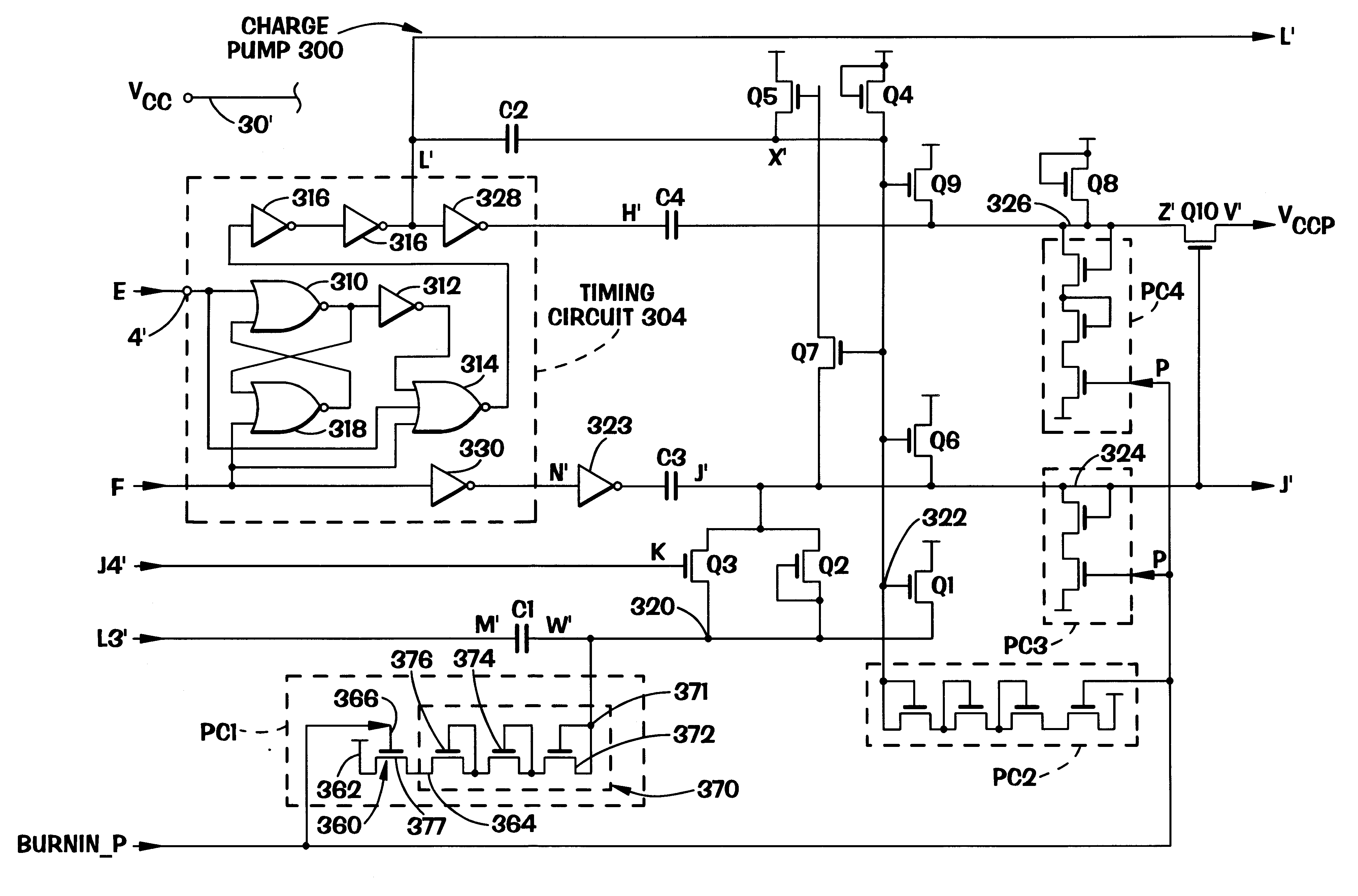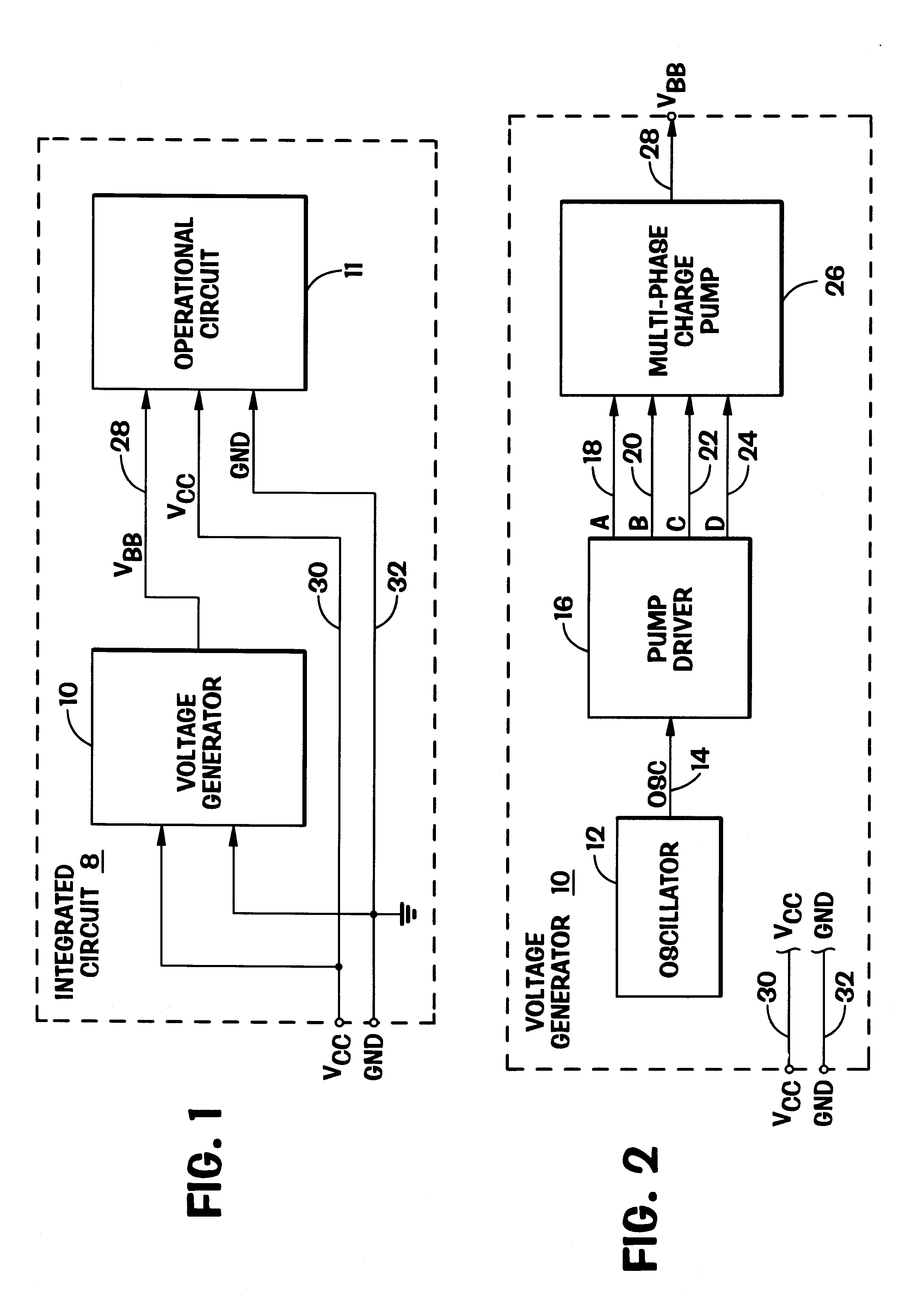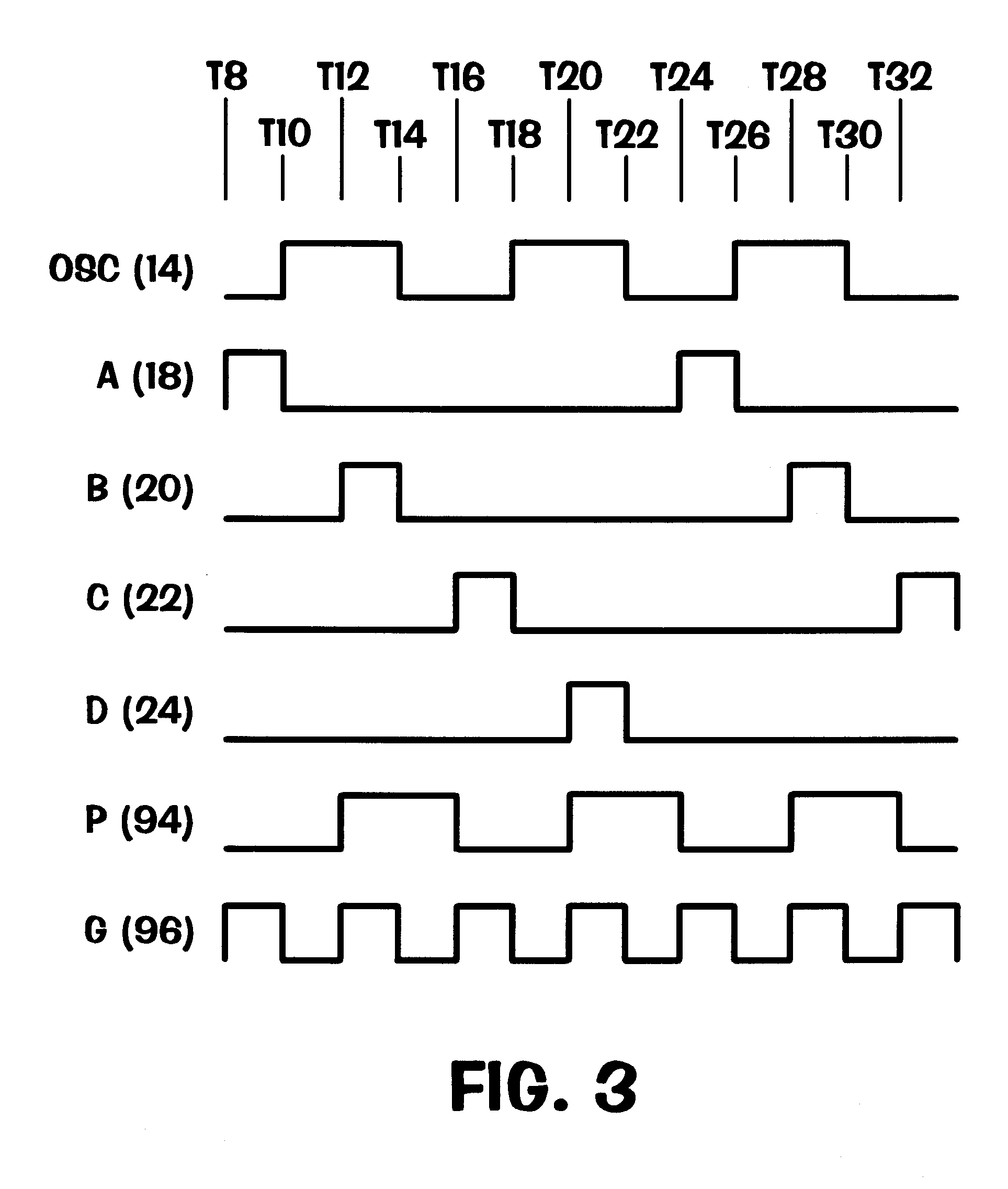Method for protecting an integrated circuit during burn-in testing
a technology for integrated circuits and burn-in testing, which is applied in the field of methods, can solve the problems of reducing system capability, affecting the efficiency of the charge pump 300, and reducing system performance in both battery and non-battery operated systems, so as to avoid over-voltage damage, prevent damage caused by over-voltage, and avoid over-voltage damage
- Summary
- Abstract
- Description
- Claims
- Application Information
AI Technical Summary
Benefits of technology
Problems solved by technology
Method used
Image
Examples
Embodiment Construction
FIG. 1 is a functional block diagram of an integrated circuit of the present invention. Integrated circuit 8 includes voltage generator 10 and operational circuit 11 formed on a substrate. Integrated circuit 8 receives power signal V.sub.CC on line 30 and a ground reference signal GND on line 32. A DC voltage therebetween provides operating current to voltage generator 10 and operational circuit 11, thereby powering integrated circuit 8.
Power supplied to integrated circuit 8 is converted by voltage generator 10 to an intermediate voltage V.sub.BB. The voltage signal V.sub.BB has a magnitude outside the range from GND to V.sub.CC. For example, when the voltage of signal V.sub.CC is 3.3 volts referenced to GND, the voltage of signal V.sub.BB in one embodiment is about -1.5 volts and in another embodiment is about -5.0 volts. Voltages of opposite polarity are used as substrate bias voltages for biasing the substrate in one embodiment wherein integrated circuit 8 is fabricated with a MO...
PUM
 Login to View More
Login to View More Abstract
Description
Claims
Application Information
 Login to View More
Login to View More - R&D
- Intellectual Property
- Life Sciences
- Materials
- Tech Scout
- Unparalleled Data Quality
- Higher Quality Content
- 60% Fewer Hallucinations
Browse by: Latest US Patents, China's latest patents, Technical Efficacy Thesaurus, Application Domain, Technology Topic, Popular Technical Reports.
© 2025 PatSnap. All rights reserved.Legal|Privacy policy|Modern Slavery Act Transparency Statement|Sitemap|About US| Contact US: help@patsnap.com



